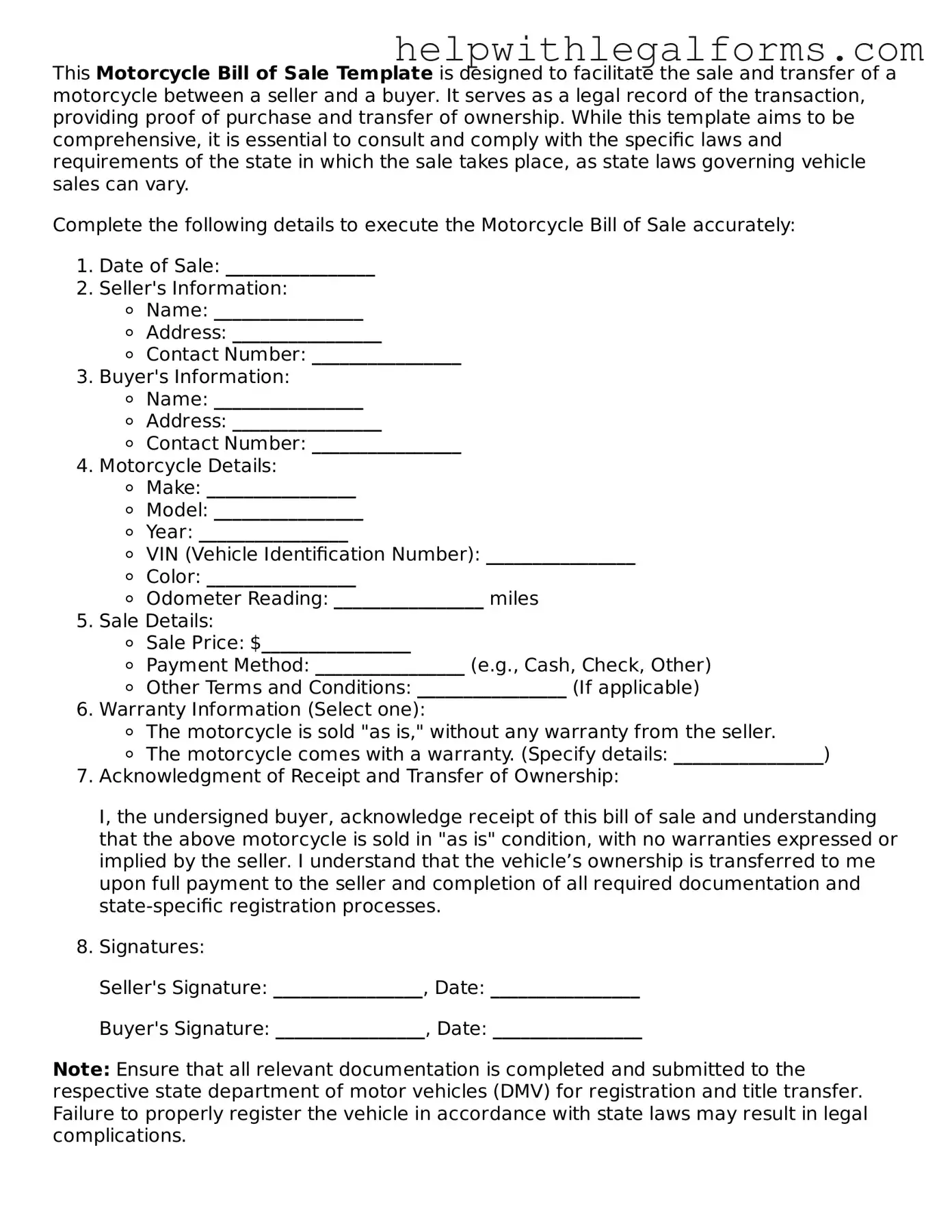This Motorcycle Bill of Sale Template is designed to facilitate the sale and transfer of a motorcycle between a seller and a buyer. It serves as a legal record of the transaction, providing proof of purchase and transfer of ownership. While this template aims to be comprehensive, it is essential to consult and comply with the specific laws and requirements of the state in which the sale takes place, as state laws governing vehicle sales can vary.
Complete the following details to execute the Motorcycle Bill of Sale accurately:
- Date of Sale: ________________
- Seller's Information:
- Name: ________________
- Address: ________________
- Contact Number: ________________
- Buyer's Information:
- Name: ________________
- Address: ________________
- Contact Number: ________________
- Motorcycle Details:
- Make: ________________
- Model: ________________
- Year: ________________
- VIN (Vehicle Identification Number): ________________
- Color: ________________
- Odometer Reading: ________________ miles
- Sale Details:
- Sale Price: $________________
- Payment Method: ________________ (e.g., Cash, Check, Other)
- Other Terms and Conditions: ________________ (If applicable)
- Warranty Information (Select one):
- The motorcycle is sold "as is," without any warranty from the seller.
- The motorcycle comes with a warranty. (Specify details: ________________)
- Acknowledgment of Receipt and Transfer of Ownership:
I, the undersigned buyer, acknowledge receipt of this bill of sale and understanding that the above motorcycle is sold in "as is" condition, with no warranties expressed or implied by the seller. I understand that the vehicle’s ownership is transferred to me upon full payment to the seller and completion of all required documentation and state-specific registration processes.
- Signatures:
Seller's Signature: ________________, Date: ________________
Buyer's Signature: ________________, Date: ________________
Note: Ensure that all relevant documentation is completed and submitted to the respective state department of motor vehicles (DMV) for registration and title transfer. Failure to properly register the vehicle in accordance with state laws may result in legal complications.
This template is provided as a courtesy and is intended for informational purposes only. It is not a substitute for professional legal advice. Users of this template should seek advice from a licensed attorney in their jurisdiction regarding any legal matters.
